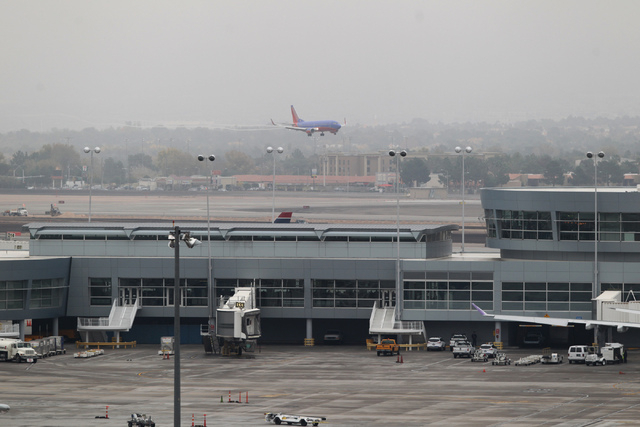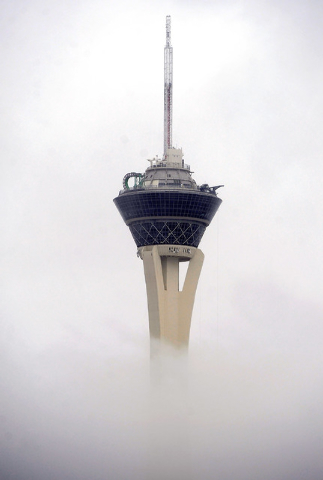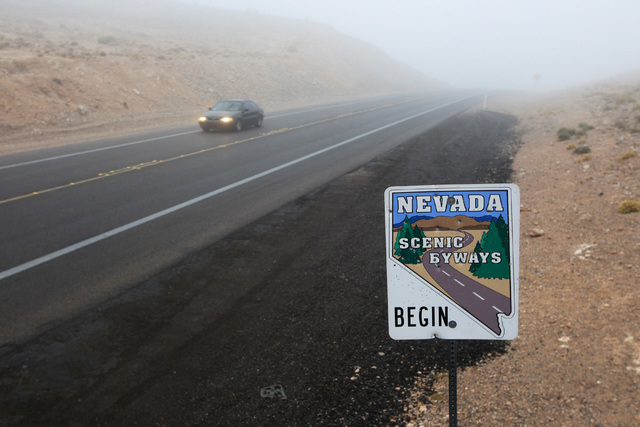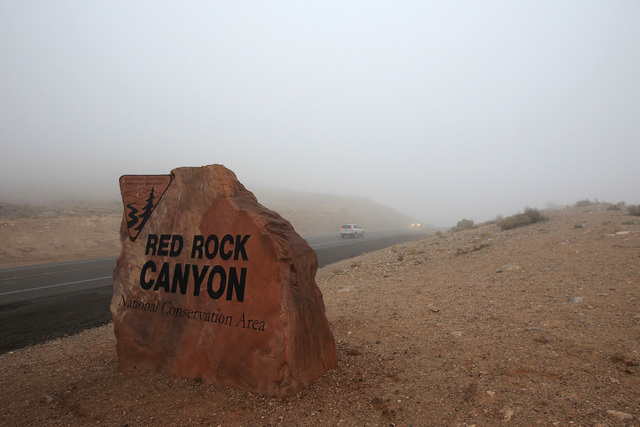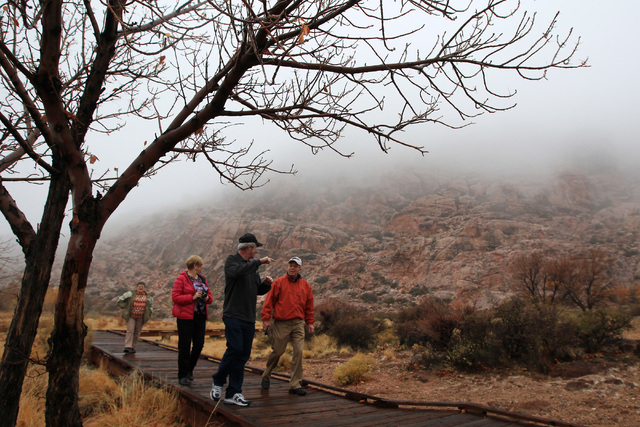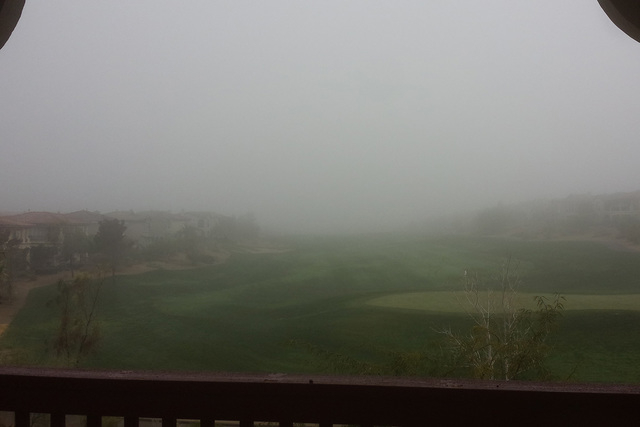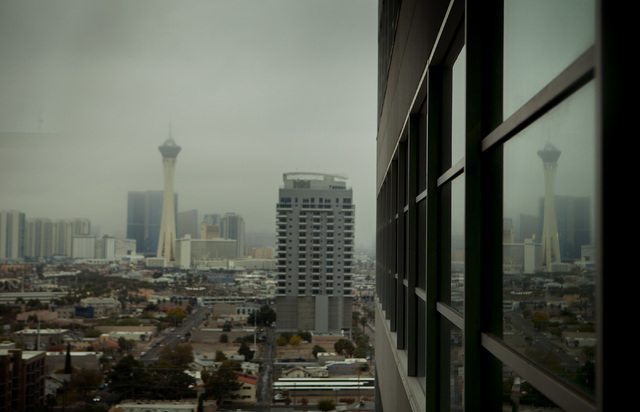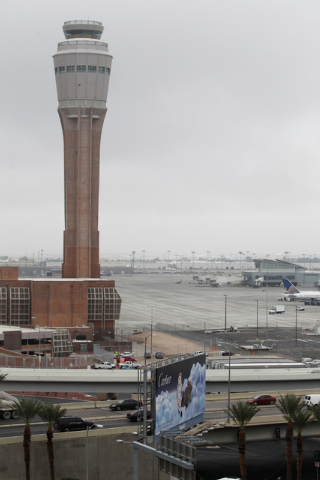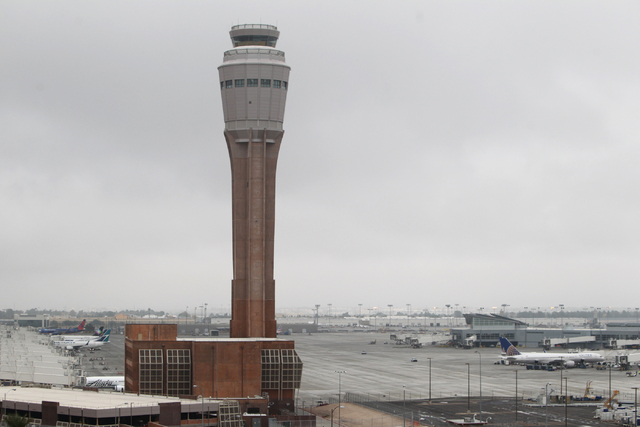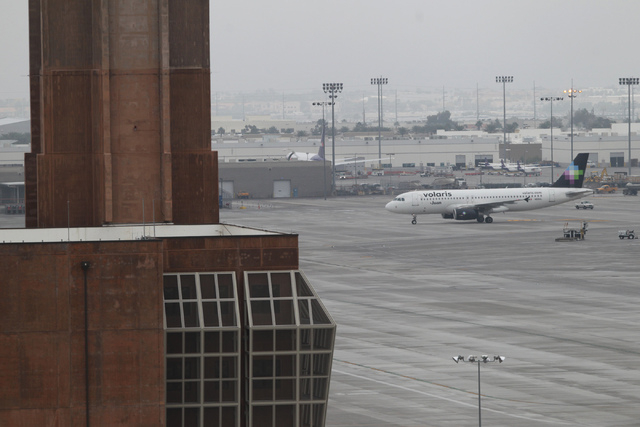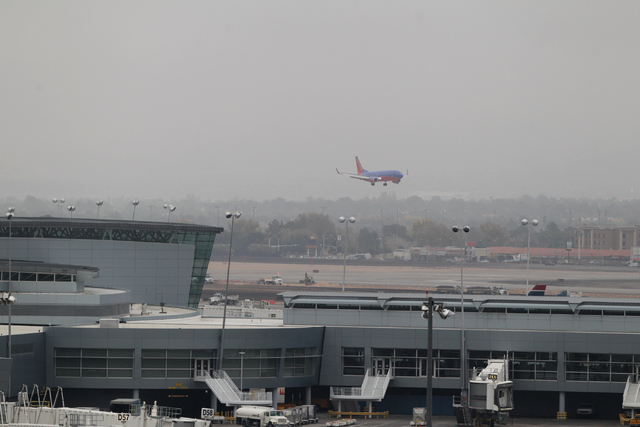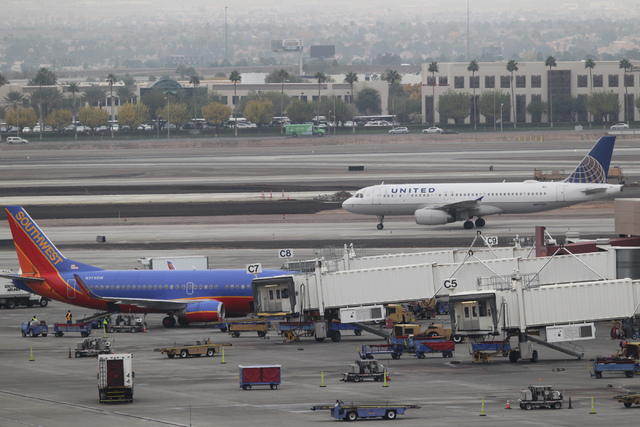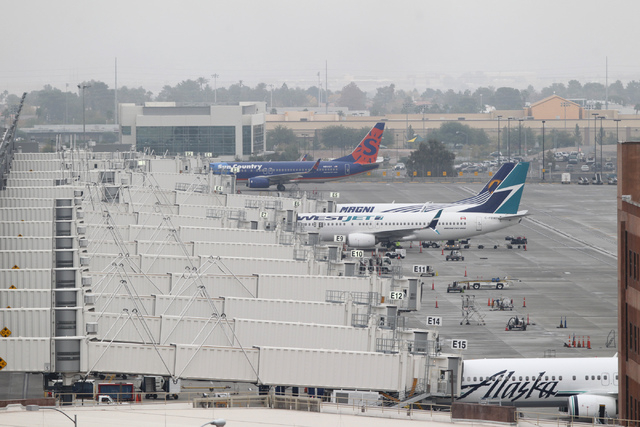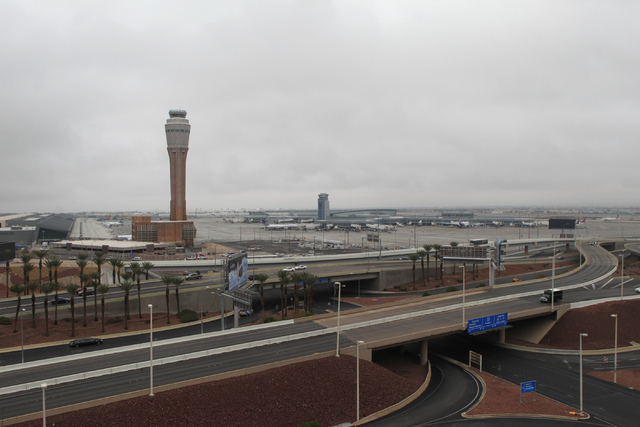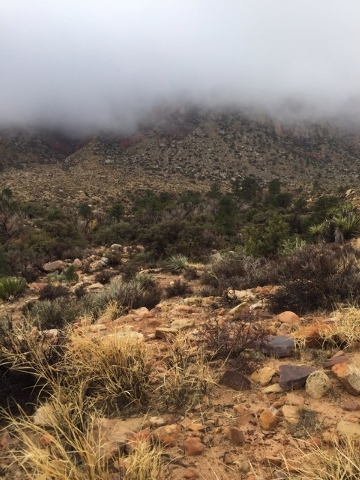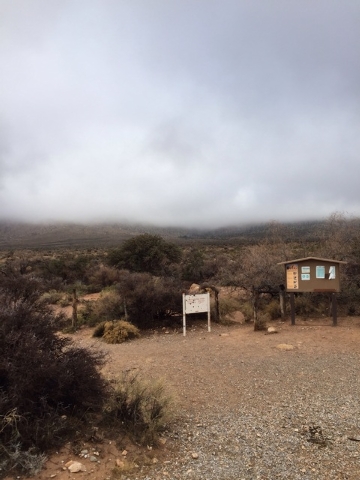Vegas fog disrupts some flights at McCarran
The only thing missing was the Golden Gate Bridge.
Las Vegas took on a San Franciscan ambience Thursday as the dense fog that shrouded the Las Vegas Valley overnight disrupted operations at McCarran International Airport, delaying flights by an average 3½ hours, Clark County Aviation Department officials said. Late in the afternoon, the average delay was an hour and 20 minutes.
Also by late afternoon, 15 McCarran flights had been canceled and 116 departures had been delayed, according to McCarran’s website.
McCarran officials encouraged passengers leaving on flights Thursday to check the status of those flights with their airlines.
The Federal Aviation Administration issued a limited ground stop for McCarran between 7:27 and 8:45 a.m., meaning that Las Vegas-bound aircraft that were departing from airports within the air route traffic control centers of Los Angeles, Oakland, Calif., Denver, Salt Lake City and Albuquerque, N.M., were held at those airports.
That compounded problems locally because planes scheduled to leave from McCarran couldn’t get to Las Vegas.
As of 3 p.m., McCarran was one of two airports nationwide experiencing delays averaging more than 45 minutes. In addition to delays at McCarran, San Francisco International Airport had delays averaging 43 minutes.
FAA spokesman Ian Gregor said delays occurred because the air-traffic controllers could not run simultaneous approaches to McCarran’s parallel north-south runways when visibility is low. In addition, one of McCarran’s east-west runways is closed for a construction project.
McCarran has a landing system that enables properly equipped aircraft with trained crews to land in the worst weather conditions. However, when visibility is greatly reduced, as was the case with the heavy fog, planes landing on parallel runways need greater spacing, reducing volume.
Gregor also said the FAA doesn’t allow departures to the north when visibility is low because of the proximity of the Stratosphere Tower.
“As a result, the arrival rate is lower than normal and we must operate in a less efficient runway configuration,” Gregor said.
The fog was especially thick in the Spring Mountains and Red Rock Canyon, where it forced the closure of the scenic loop road Wednesday afternoon. The road was reopened around noon Thursday.
Such thick fog hits the area once every two years, a weather service meteorologist said.
The fog is expected to stick around until late Friday morning, according to National Weather Service meteorologist Justin Pullin. Low cloud ceilings are expected to push fog into the lower parts of the valley, where visibility will be much lower than in areas such as Summerlin and the northwest valley, Pullin said.
Temperatures will be in the upper 40s and low 50s Thursday night, but will warm up considerably Friday morning. Daytime highs are forecast in the low 60s, and lows will drop to the low 50s at night, Pullin said.
Skies will clear slightly Friday afternoon, but another upper-level system will roll in Friday evening and into Saturday morning, bringing high temperatures in the mid-60s. Clouds should clear out by Saturday evening, Pullin said.
Reivew-Journal writers Kimberly De La Cruz and Kimber Laux contributed to this report. Contact Richard N. Velotta at rvelotta@reviewjournal.com or 702-477-3893. Find him on Twitter: @RickVelotta.



